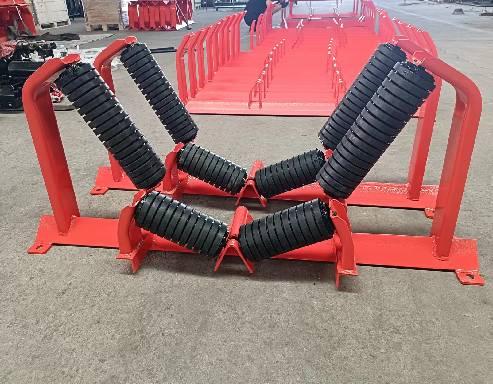 Afrikaans
Afrikaans  Albanian
Albanian  Amharic
Amharic  Arabic
Arabic  Armenian
Armenian  Azerbaijani
Azerbaijani  Basque
Basque  Belarusian
Belarusian  Bengali
Bengali  Bosnian
Bosnian  Bulgarian
Bulgarian  Catalan
Catalan  Cebuano
Cebuano  Corsican
Corsican  Croatian
Croatian  Czech
Czech  Danish
Danish  Dutch
Dutch  English
English  Esperanto
Esperanto  Estonian
Estonian  Finnish
Finnish  French
French  Frisian
Frisian  Galician
Galician  Georgian
Georgian  German
German  Greek
Greek  Gujarati
Gujarati  Haitian Creole
Haitian Creole  hausa
hausa  hawaiian
hawaiian  Hebrew
Hebrew  Hindi
Hindi  Miao
Miao  Hungarian
Hungarian  Icelandic
Icelandic  igbo
igbo  Indonesian
Indonesian  irish
irish  Italian
Italian  Japanese
Japanese  Javanese
Javanese  Kannada
Kannada  kazakh
kazakh  Khmer
Khmer  Rwandese
Rwandese  Korean
Korean  Kurdish
Kurdish  Kyrgyz
Kyrgyz  Lao
Lao  Latin
Latin  Latvian
Latvian  Lithuanian
Lithuanian  Luxembourgish
Luxembourgish  Macedonian
Macedonian  Malgashi
Malgashi  Malay
Malay  Malayalam
Malayalam  Maltese
Maltese  Maori
Maori  Marathi
Marathi  Mongolian
Mongolian  Myanmar
Myanmar  Nepali
Nepali  Norwegian
Norwegian  Norwegian
Norwegian  Occitan
Occitan  Pashto
Pashto  Persian
Persian  Polish
Polish  Portuguese
Portuguese  Punjabi
Punjabi  Romanian
Romanian  Russian
Russian  Samoan
Samoan  Scottish Gaelic
Scottish Gaelic  Serbian
Serbian  Sesotho
Sesotho  Shona
Shona  Sindhi
Sindhi  Sinhala
Sinhala  Slovak
Slovak  Slovenian
Slovenian  Somali
Somali  Spanish
Spanish  Sundanese
Sundanese  Swahili
Swahili  Swedish
Swedish  Tagalog
Tagalog  Tajik
Tajik  Tamil
Tamil  Tatar
Tatar  Telugu
Telugu  Thai
Thai  Turkish
Turkish  Turkmen
Turkmen  Ukrainian
Ukrainian  Urdu
Urdu  Uighur
Uighur  Uzbek
Uzbek  Vietnamese
Vietnamese  Welsh
Welsh  Bantu
Bantu  Yiddish
Yiddish  Yoruba
Yoruba  Zulu
Zulu Feb . 18, 2025 06:21
Back to list
conveyor belt pulley types
Conveyor belt pulleys play an essential role in the smooth and efficient operation of conveyor systems across various industries, from mining to manufacturing. These components might seem secondary, but their types and quality immensely influence the overall functionality of the conveyor belt. Selecting the right pulley type not only enhances productivity but also minimizes downtime and maintenance costs, reinforcing trust in the conveyor system's reliability. Here's an in-depth look into the different types of conveyor belt pulleys that are pivotal to achieving optimized operations.
5. Split Pulleys For operations requiring quick and easy maintenance, split pulleys are the go-to choice. These pulleys can be split into halves, making installation and replacement straightforward without extensive downtime. This type is advantageous in fast-paced industries that cannot afford prolonged halts, ensuring that maintenance is hassle-free and efficiency remains uncompromised. Factors Influencing Pulley Selection Choosing the appropriate conveyor belt pulley type requires a thorough understanding of several factors. The nature of the materials being transported, the ambient conditions of the operation, the required belt tension, and the potential for material build-up all dictate which pulley type will deliver optimal results. Moreover, considering the economic aspect, the initial investment in high-quality pulleys, though seemingly higher, often results in substantial cost-savings in maintenance and operational efficiency over time. Expert Recommendations and Trustworthiness Professionals in the conveyor system industry emphasize the importance of working with reputable suppliers and manufacturers for these infrastructure components. Quality and reliability must be prioritized, as pulleys play an integral role in conveyor systems’ performance and lifespan. Collaborating with industry experts guarantees that the chosen pulley types align with the specific operational requirements and that they are crafted with precision and durability in mind. The choice of conveyor belt pulley types significantly affects the overall performance and efficiency of a conveying system. By selecting the right type, companies can enhance productivity, reduce downtime, and improve the conveyor system's overall reliability. Investing in the appropriate pulleys, backed by expert input and sourced from trusted suppliers, ensures both short-term efficiency and long-term operational benefits, consolidating the credibility and authority of the entire conveyor system.


5. Split Pulleys For operations requiring quick and easy maintenance, split pulleys are the go-to choice. These pulleys can be split into halves, making installation and replacement straightforward without extensive downtime. This type is advantageous in fast-paced industries that cannot afford prolonged halts, ensuring that maintenance is hassle-free and efficiency remains uncompromised. Factors Influencing Pulley Selection Choosing the appropriate conveyor belt pulley type requires a thorough understanding of several factors. The nature of the materials being transported, the ambient conditions of the operation, the required belt tension, and the potential for material build-up all dictate which pulley type will deliver optimal results. Moreover, considering the economic aspect, the initial investment in high-quality pulleys, though seemingly higher, often results in substantial cost-savings in maintenance and operational efficiency over time. Expert Recommendations and Trustworthiness Professionals in the conveyor system industry emphasize the importance of working with reputable suppliers and manufacturers for these infrastructure components. Quality and reliability must be prioritized, as pulleys play an integral role in conveyor systems’ performance and lifespan. Collaborating with industry experts guarantees that the chosen pulley types align with the specific operational requirements and that they are crafted with precision and durability in mind. The choice of conveyor belt pulley types significantly affects the overall performance and efficiency of a conveying system. By selecting the right type, companies can enhance productivity, reduce downtime, and improve the conveyor system's overall reliability. Investing in the appropriate pulleys, backed by expert input and sourced from trusted suppliers, ensures both short-term efficiency and long-term operational benefits, consolidating the credibility and authority of the entire conveyor system.
Next:
Latest news
-
Revolutionizing Conveyor Reliability with Advanced Rubber Lagging PulleysNewsJul.22,2025
-
Powering Precision and Durability with Expert Manufacturers of Conveyor ComponentsNewsJul.22,2025
-
Optimizing Conveyor Systems with Advanced Conveyor AccessoriesNewsJul.22,2025
-
Maximize Conveyor Efficiency with Quality Conveyor Idler PulleysNewsJul.22,2025
-
Future-Proof Your Conveyor System with High-Performance Polyurethane RollerNewsJul.22,2025
-
Driving Efficiency Forward with Quality Idlers and RollersNewsJul.22,2025
OUR PRODUCTS





























